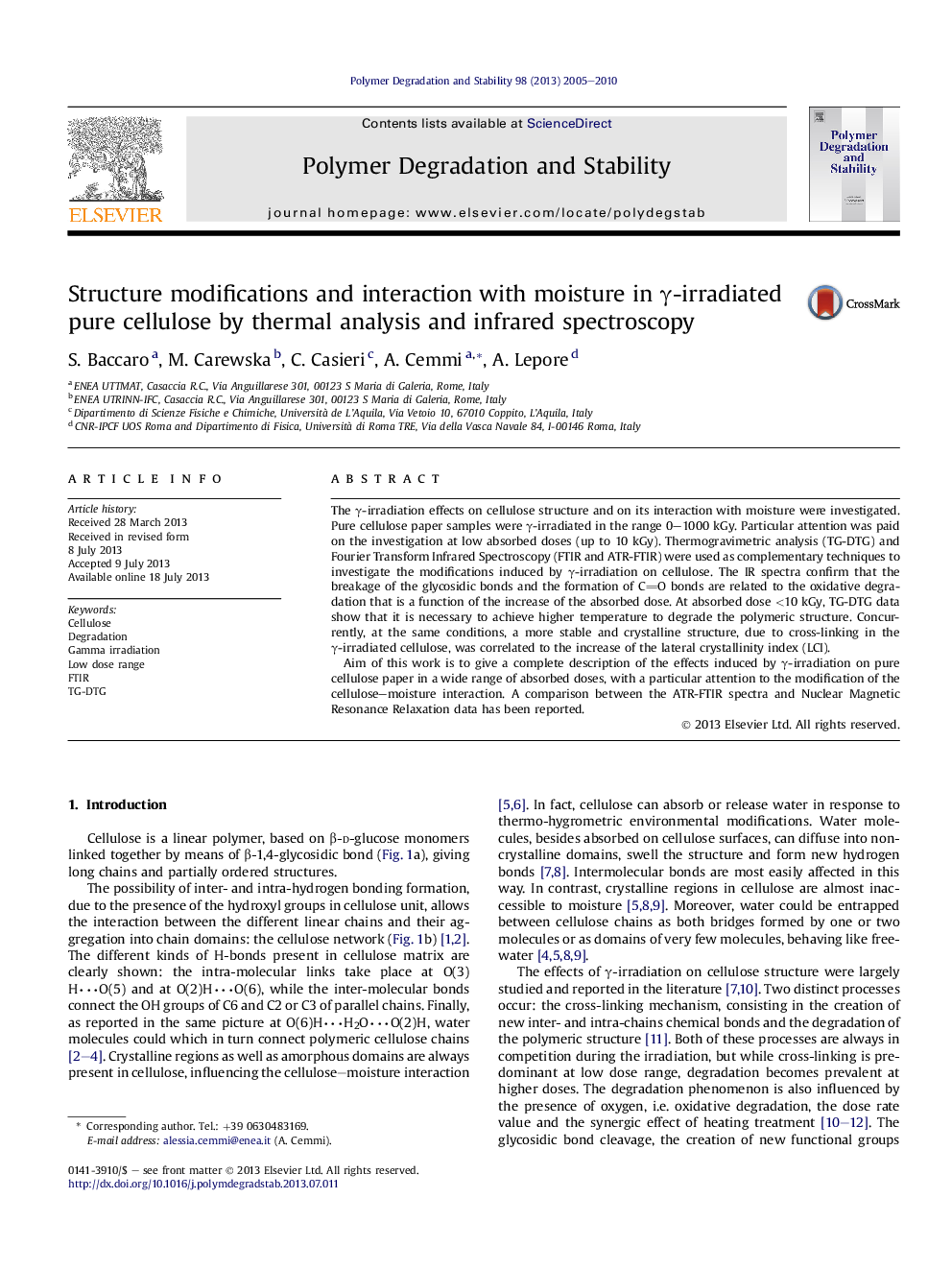| کد مقاله | کد نشریه | سال انتشار | مقاله انگلیسی | نسخه تمام متن |
|---|---|---|---|---|
| 5202064 | 1381887 | 2010 | 6 صفحه PDF | دانلود رایگان |

The γ-irradiation effects on cellulose structure and on its interaction with moisture were investigated. Pure cellulose paper samples were γ-irradiated in the range 0-1000 kGy. Particular attention was paid on the investigation at low absorbed doses (up to 10 kGy). Thermogravimetric analysis (TG-DTG) and Fourier Transform Infrared Spectroscopy (FTIR and ATR-FTIR) were used as complementary techniques to investigate the modifications induced by γ-irradiation on cellulose. The IR spectra confirm that the breakage of the glycosidic bonds and the formation of CO bonds are related to the oxidative degradation that is a function of the increase of the absorbed dose. At absorbed dose <10 kGy, TG-DTG data show that it is necessary to achieve higher temperature to degrade the polymeric structure. Concurrently, at the same conditions, a more stable and crystalline structure, due to cross-linking in the γ-irradiated cellulose, was correlated to the increase of the lateral crystallinity index (LCI).Aim of this work is to give a complete description of the effects induced by γ-irradiation on pure cellulose paper in a wide range of absorbed doses, with a particular attention to the modification of the cellulose-moisture interaction. A comparison between the ATR-FTIR spectra and Nuclear Magnetic Resonance Relaxation data has been reported.
Journal: Polymer Degradation and Stability - Volume 98, Issue 10, October 2013, Pages 2005-2010